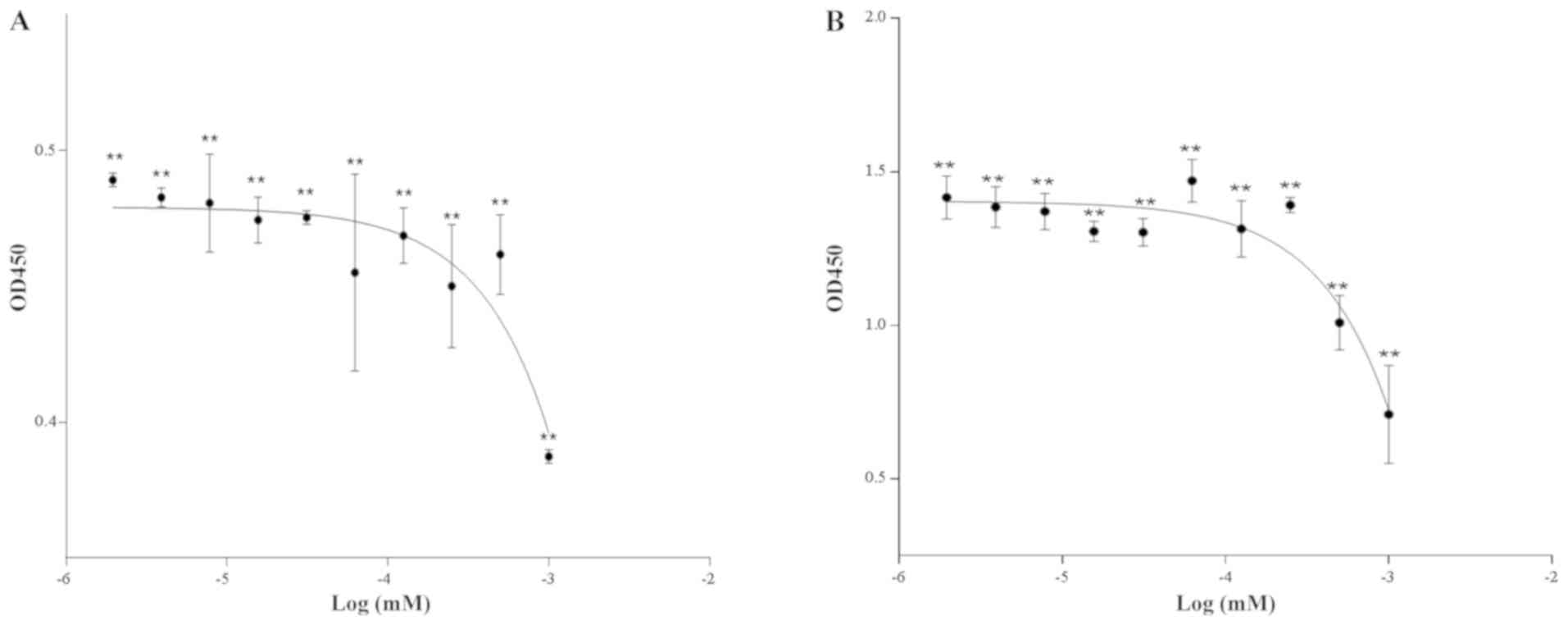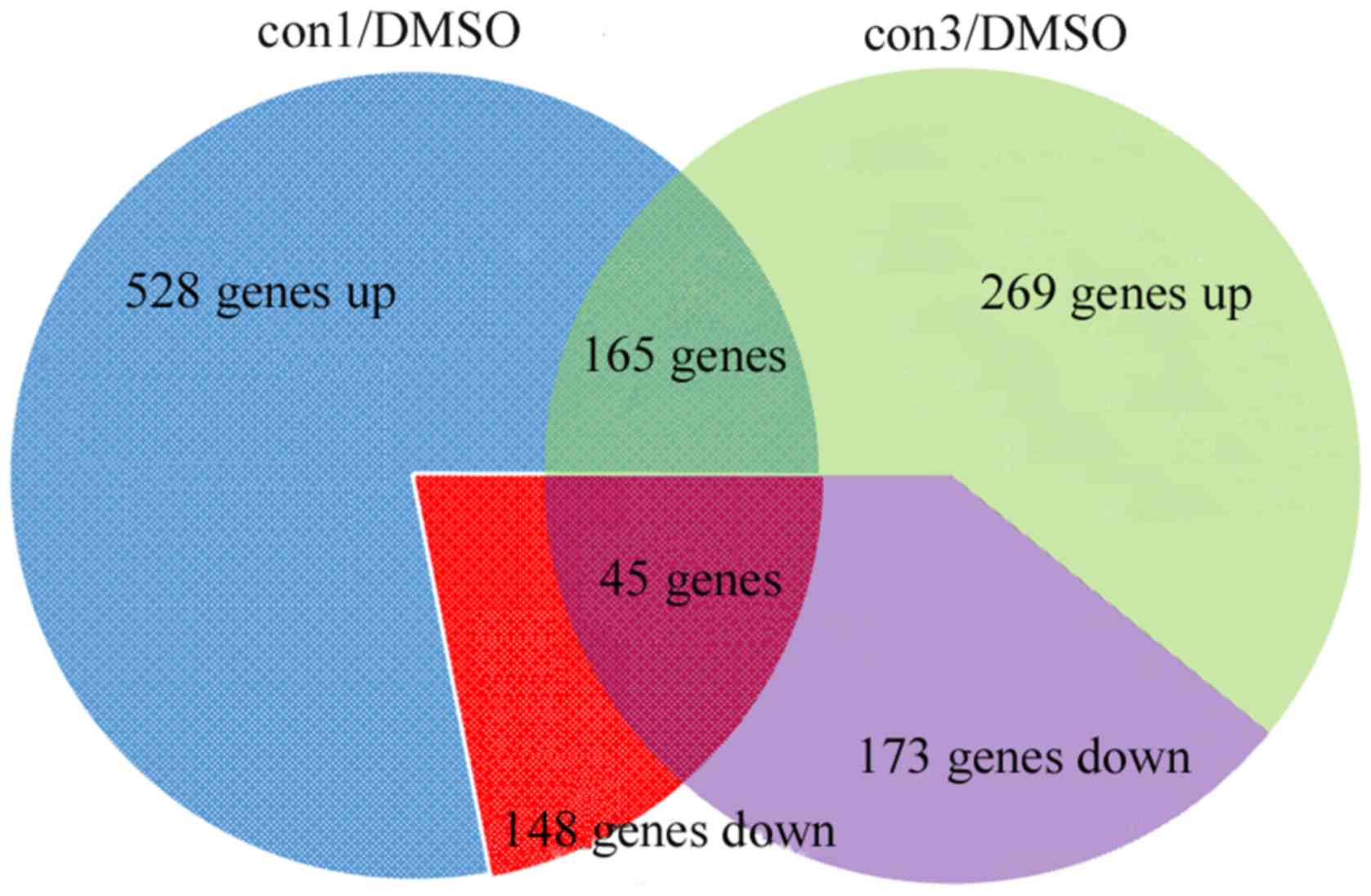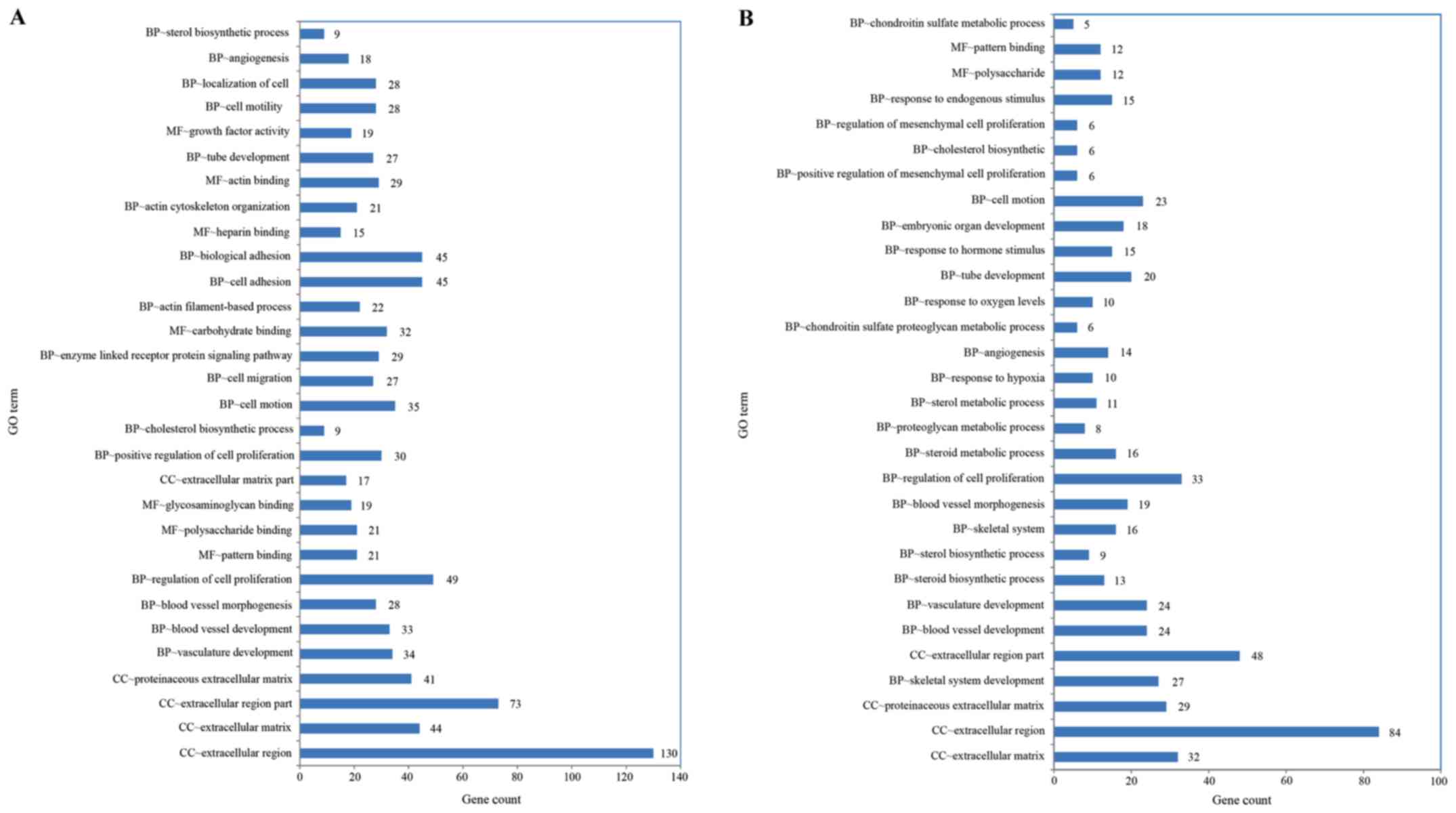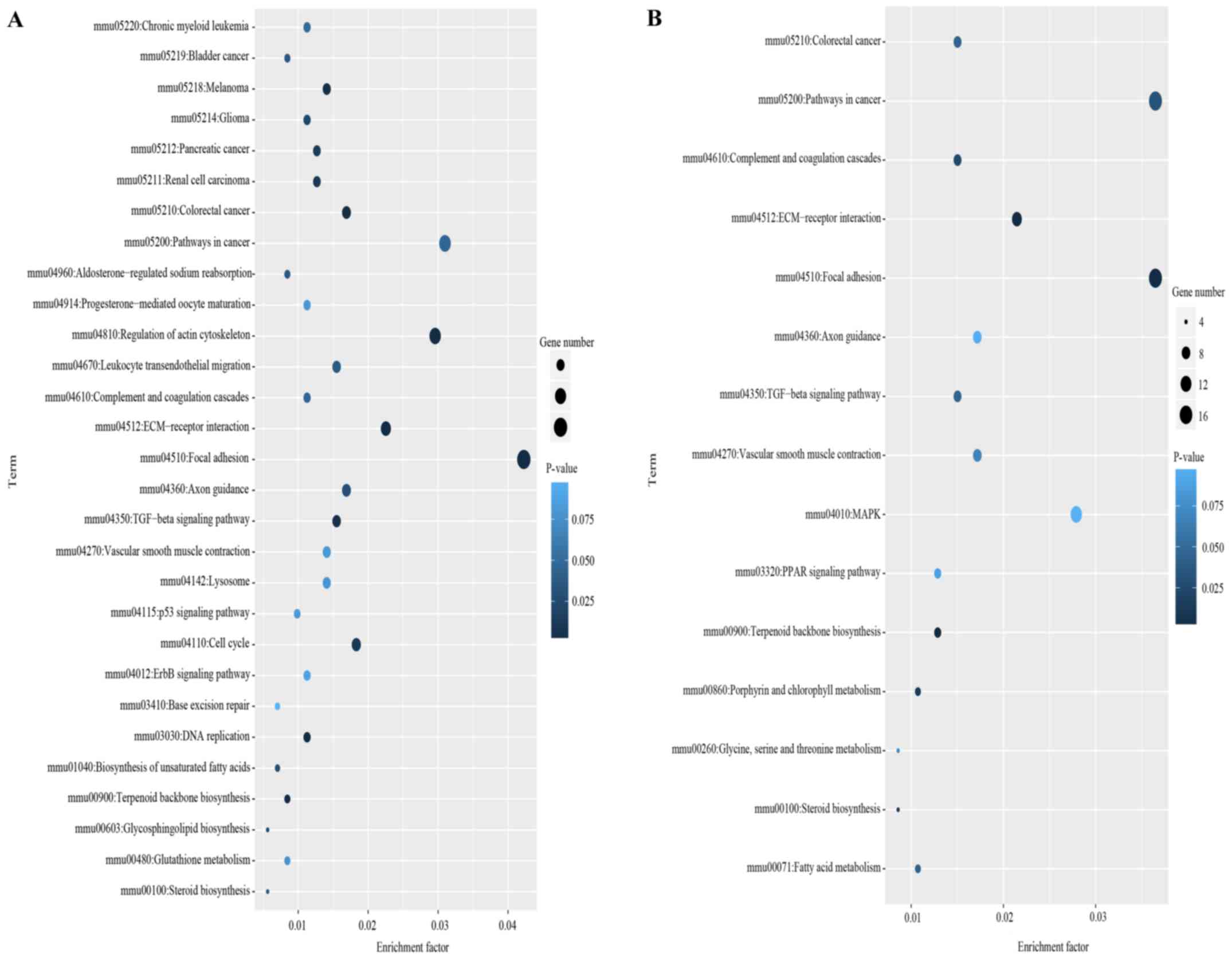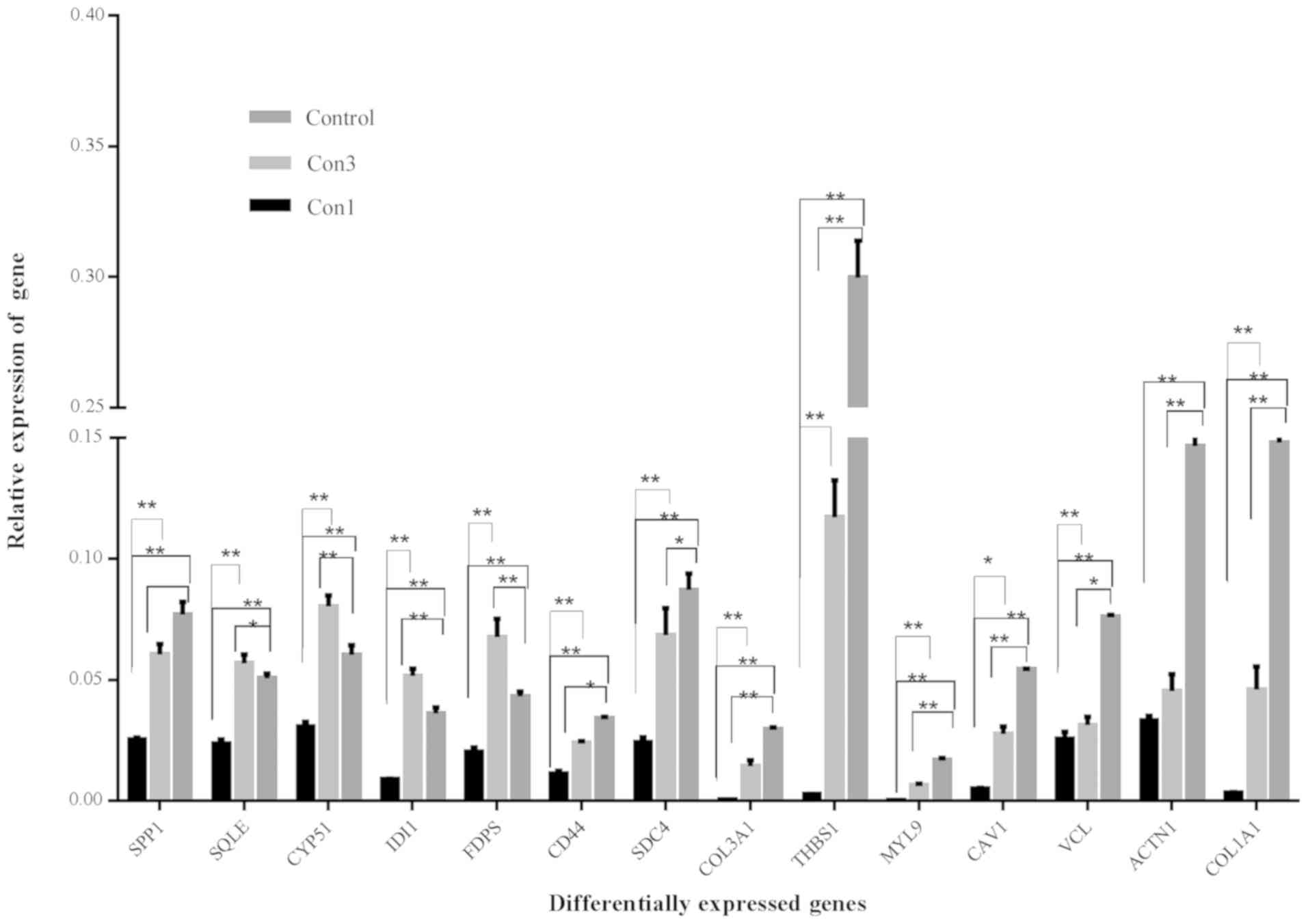|
1
|
Schettler T: Human exposure to phthalates
via consumer products. Int J Androl. 29:134–139; discussion
181–185. 2006. View Article : Google Scholar : PubMed/NCBI
|
|
2
|
Markarian J: PVC additives-What lies
ahead? Plast Addit Compound. 9:22–25. 2007. View Article : Google Scholar
|
|
3
|
Högberg J, Hanberg A, Berglund M,
Skerfving S, Remberger M, Calafat AM, Filipsson AF, Jansson B,
Johansson N, Appelgren M and Håkansson H: Phthalate diesters and
their metabolites in human breast milk, blood or serum, and urine
as biomarkers of exposure in vulnerable populations. Environ Health
Perspect. 116:334–339. 2008. View Article : Google Scholar : PubMed/NCBI
|
|
4
|
Latini G, De Felice C, Presta G, Del
Vecchio A, Paris I, Ruggieri F and Mazzeo P: In utero exposure to
di-(2-ethylhexyl)phthalate and duration of human pregnancy. Environ
Health Perspect. 111:1783–1785. 2003. View
Article : Google Scholar : PubMed/NCBI
|
|
5
|
Latini G, De Felice C, Presta G, Del
Vecchio A, Paris I, Ruggieri F and Mazzeo P: Exposure to
Di(2-ethylhexyl)phthalate in humans during pregnancy. A preliminary
report. Biol Neonate. 83:22–24. 2003. View Article : Google Scholar : PubMed/NCBI
|
|
6
|
Swan SH: Prenatal phthalate exposure and
anogenital distance in male infants. Environ Health Perspect.
114:A88–A89. 2006. View Article : Google Scholar : PubMed/NCBI
|
|
7
|
Fay M, Donohue JM and De Rosa C: ATSDR
evaluation of health effects of chemicals. VI.
Di(2-ethylhexyl)phthalate. Agency for toxic substances and disease
registry. Toxicol Ind Health. 15:651–746. 1999. View Article : Google Scholar : PubMed/NCBI
|
|
8
|
Lyche JL, Gutleb AC, Bergman A, Eriksen
GS, Murk AJ, Ropstad E, Saunders M and Skaare JU: Reproductive and
developmental toxicity of phthalates. J Toxicol Environ Health B
Crit Rev. 12:225–249. 2009. View Article : Google Scholar : PubMed/NCBI
|
|
9
|
Fratantoni JC: Review: The platelet
storage lesion: Possible role of plasticizers? Blood Cells.
18:435–440; discussion 441–443. 1992.PubMed/NCBI
|
|
10
|
Hayes DN and Kim WY: The next steps in
next-gen sequencing of cancer genomes. J Clin Invest. 125:462–468.
2015. View
Article : Google Scholar : PubMed/NCBI
|
|
11
|
Wang Q, Lu Q and Zhao H: A review of study
designs and statistical methods for genomic epidemiology studies
using next generation sequencing. Front Genet. 6:1492015.
View Article : Google Scholar : PubMed/NCBI
|
|
12
|
Fiorini C, Tilloy-Ellul A, Chevalier S,
Charuel C and Pointis G: Sertoli cell junctional proteins as early
targets for different classes of reproductive toxicants. Reprod
Toxicol. 18:413–421. 2004. View Article : Google Scholar : PubMed/NCBI
|
|
13
|
Rodriguez-Sosa JR, Bondareva A, Tang L,
Avelar GF, Coyle KM, Modelski M, Alpaugh W, Conley A, Wynne-Edwards
K, França LR, et al: Phthalate esters affect maturation and
function of primate testis tissue ectopically grafted in mice. Mol
Cell Endocrinol. 398:89–100. 2014. View Article : Google Scholar : PubMed/NCBI
|
|
14
|
Sjöberg P, Bondesson U, Kjellen L,
Lindquist NG, Montin G and Plöen L: Kinetics of di-(2-ethylhexyl)
phthalate in immature and mature rats and effect on testis. Acta
Pharmacol Toxicol (Copenh). 56:30–37. 1985. View Article : Google Scholar : PubMed/NCBI
|
|
15
|
Sjöberg P, Lindqvist NG and Plöen L:
Age-dependent response of the rat testes to di(2-ethylhexyl)
phthalate. Environ Health Perspect. 65:237–242. 1986. View Article : Google Scholar : PubMed/NCBI
|
|
16
|
Chapin RE, Gray TJ, Phelps JL and Dutton
SL: The effects of mono-(2-ethylhexyl)-phthalate on rat Sertoli
cell-enriched primary cultures. Toxicol Appl Pharmacol. 92:467–479.
1988. View Article : Google Scholar : PubMed/NCBI
|
|
17
|
Galdieri M, Ziparo E, Palombi F, Russo MA
and Stefanini M: Pure sertoli cell cultures: A new model for the
study of somatic-Germ cell interactions. J Androl. 2:249–254. 1981.
View Article : Google Scholar
|
|
18
|
van Dijk EL, Auger H, Jaszczyszyn Y and
Thermes C: Ten years of next-generation sequencing technology.
Trends Genet. 30:418–426. 2014. View Article : Google Scholar : PubMed/NCBI
|
|
19
|
Livak KJ and Schmittgen TD: Analysis of
relative gene expression data using real-time quantitative PCR and
the 2(-Delta Delta C(T)) method. Methods. 25:402–408. 2001.
View Article : Google Scholar : PubMed/NCBI
|
|
20
|
Casas L, Fernández MF, Llop S, Guxens M,
Ballester F, Olea N, Irurzun MB, Rodríguez LS, Riaño I, Tardón A,
et al: Urinary concentrations of phthalates and phenols in a
population of Spanish pregnant women and children. Environ Int.
37:858–866. 2011. View Article : Google Scholar : PubMed/NCBI
|
|
21
|
Frederiksen H, Aksglaede L, Sorensen K,
Skakkebaek NE, Juul A and Andersson AM: Urinary excretion of
phthalate metabolites in 129 healthy Danish children and
adolescents: Estimation of daily phthalate intake. Environ Res.
111:656–663. 2011. View Article : Google Scholar : PubMed/NCBI
|
|
22
|
Guo Y and Kannan K: Comparative assessment
of human exposure to phthalate esters from house dust in China and
the United States. Environ Sci Technol. 45:3788–3794. 2011.
View Article : Google Scholar : PubMed/NCBI
|
|
23
|
Romero-Franco M, Hernández-Ramírez RU,
Calafat AM, Cebrián ME, Needham LL, Teitelbaum S, Wolff MS and
López-Carrillo L: Personal care product use and urinary levels of
phthalate metabolites in Mexican women. Environ Int. 37:867–871.
2011. View Article : Google Scholar : PubMed/NCBI
|
|
24
|
Woodruff TJ, Zota AR and Schwartz JM:
Environmental chemicals in pregnant women in the United States:
NHANES 2003–2004. Environ Health Perspect. 119:878–885. 2011.
View Article : Google Scholar : PubMed/NCBI
|
|
25
|
Lin S, Ku HY, Su PH, Chen JW, Huang PC,
Angerer J and Wang SL: Phthalate exposure in pregnant women and
their children in central Taiwan. Chemosphere. 82:947–955. 2011.
View Article : Google Scholar : PubMed/NCBI
|
|
26
|
Midic U, Vincent KA, VandeVoort CA and
Latham KE: Effects of long-term endocrine disrupting compound
exposure on Macaca mulatta embryonic stem cells. Reprod Toxicol.
65:382–393. 2016. View Article : Google Scholar : PubMed/NCBI
|
|
27
|
Moss EJ, Cook MW, Thomas LV and Gray TJ:
The effect of mono-(2-ethylhexyl) phthalate and other phthalate
esters on lactate production by Sertoli cells in vitro. Toxicol
Lett. 40:77–84. 1988. View Article : Google Scholar : PubMed/NCBI
|
|
28
|
Lamb JC IV and Chapin RE: Testicular and
germ cell toxicity: In vitro approaches. Reprod Toxicol. 7 (Suppl
1):S17–S22. 1993. View Article : Google Scholar
|
|
29
|
Davis BJ, Weaver R, Gaines LJ and Heindel
JJ: Mono-(2-ethylhexyl) phthalate suppresses estradiol production
independent of FSH-cAMP stimulation in rat granulosa cells. Toxicol
Appl Pharmacol. 128:224–228. 1994. View Article : Google Scholar : PubMed/NCBI
|
|
30
|
Stenz L, Escoffier J, Rahban R, Nef S and
Paoloni-Giacobino A: Testicular dysgenesis syndrome and
long-lasting epigenetic silencing of mouse sperm genes involved in
the reproductive system after prenatal exposure to DEHP. PLoS One.
12:e01704412017. View Article : Google Scholar : PubMed/NCBI
|
|
31
|
van Dartel DA, Pennings JL, Robinson JF,
Kleinjans JC and Piersma AH: Discriminating classes of
developmental toxicants using gene expression profiling in the
embryonic stem cell test. Toxicol Lett. 201:143–151. 2011.
View Article : Google Scholar : PubMed/NCBI
|
|
32
|
Nardelli TC, Erythropel HC and Robaire B:
Toxicogenomic screening of replacements for di(2-Ethylhexyl)
phthalate (DEHP) using the immortalized TM4 sertoli cell line. PLoS
One. 10:e01384212015. View Article : Google Scholar : PubMed/NCBI
|
|
33
|
Vogl AW, Pfeiffer DC and Redenbach DM:
Ectoplasmic (‘junctional’) specializations in mammalian Sertoli
cells: Influence on spermatogenic cells. Ann NY Acad Sci.
637:175–202. 1991. View Article : Google Scholar : PubMed/NCBI
|
|
34
|
Vogl AW, Pfeiffer DC, Mulholland D, Kimel
G and Guttman J: Unique and multifunctional adhesion junctions in
the testis: Ectoplasmic specializations. Arch Histol Cytol.
63:1–15. 2000. View Article : Google Scholar : PubMed/NCBI
|
|
35
|
Li LH, Jester WF Jr and Orth JM: Effects
of relatively low levels of mono-(2-ethylhexyl) phthalate on
cocultured Sertoli cells and gonocytes from neonatal rats. Toxicol
Appl Pharmacol. 153:258–265. 1998. View Article : Google Scholar : PubMed/NCBI
|
|
36
|
Yao PL, Lin YC and Richburg JH:
Mono-(2-ethylhexyl) phthalate-induced disruption of junctional
complexes in the seminiferous epithelium of the rodent testis is
mediated by MMP2. Biol Reprod. 82:516–527. 2010. View Article : Google Scholar : PubMed/NCBI
|
|
37
|
Landkocz Y, Poupin P, Atienzar F and
Vasseur P: Transcriptomic effects of di-(2-ethylhexyl)-phthalate in
Syrian hamster embryo cells: An important role of early
cytoskeleton disturbances in carcinogenesis? BMC Genomics.
12:5242011. View Article : Google Scholar : PubMed/NCBI
|
|
38
|
Thompson CJ, Ross SM and Gaido KW:
Di(n-butyl) phthalate impairs cholesterol transport and
steroidogenesis in the fetal rat testis through a rapid and
reversible mechanism. Endocrinology. 145:1227–1237. 2004.
View Article : Google Scholar : PubMed/NCBI
|
|
39
|
Liu K, Lehmann KP, Sar M, Young SS and
Gaido KW: Gene expression profiling following in utero exposure to
phthalate esters reveals new gene targets in the etiology of
testicular dysgenesis. Biol Reprod. 73:180–192. 2005. View Article : Google Scholar : PubMed/NCBI
|
|
40
|
Sharpe RM: Hormones and testis development
and the possible adverse effects of environmental chemicals.
Toxicol Lett. 120:221–232. 2001. View Article : Google Scholar : PubMed/NCBI
|
|
41
|
Akingbemi BT, Ge R, Klinefelter GR, Zirkin
BR and Hardy MP: Phthalate-induced Leydig cell hyperplasia is
associated with multiple endocrine disturbances. Proc Natl Acad Sci
USA. 101:775–780. 2004. View Article : Google Scholar : PubMed/NCBI
|
|
42
|
Gunnarsson D, Leffler P, Ekwurtzel E,
Martinsson G, Liu K and Selstam G: Mono-(2-ethylhexyl) phthalate
stimulates basal steroidogenesis by a cAMP-independent mechanism in
mouse gonadal cells of both sexes. Reproduction. 135:693–703. 2008.
View Article : Google Scholar : PubMed/NCBI
|
|
43
|
Bello UM, Madekurozwa MC, Groenewald HB,
Aire TA and Arukwe A: The effects on steroidogenesis and
histopathology of adult male Japanese quails (Coturnix coturnix
japonica) testis following pre-pubertal exposure to di(n-butyl)
phthalate (DBP). Comp Biochem Physiol C Toxicol Pharmacol.
166:24–33. 2014. View Article : Google Scholar : PubMed/NCBI
|
|
44
|
Calabrese EJ and Baldwin LA: Hormesis:
U-shaped dose responses and their centrality in toxicology. Trends
Pharmacol Sci. 22:285–291. 2001. View Article : Google Scholar : PubMed/NCBI
|
|
45
|
Calabrese EJ: Overcompensation
stimulation: A mechanism for hormetic effects. Crit Rev Toxicol.
31:425–470. 2001. View Article : Google Scholar : PubMed/NCBI
|
|
46
|
Hunt D and Rai SN: Testing threshold and
hormesis in a random effects dose-response model applied to
developmental toxicity data. Biom J. 47:319–328. 2005. View Article : Google Scholar : PubMed/NCBI
|
|
47
|
Chen F, Liu SS, Yu M, Qu R and Wang MC:
Blocking the entrance of AMP pocket results in hormetic stimulation
of imidazolium-based ionic liquids to firefly luciferase.
Chemosphere. 132:108–113. 2015. View Article : Google Scholar : PubMed/NCBI
|















